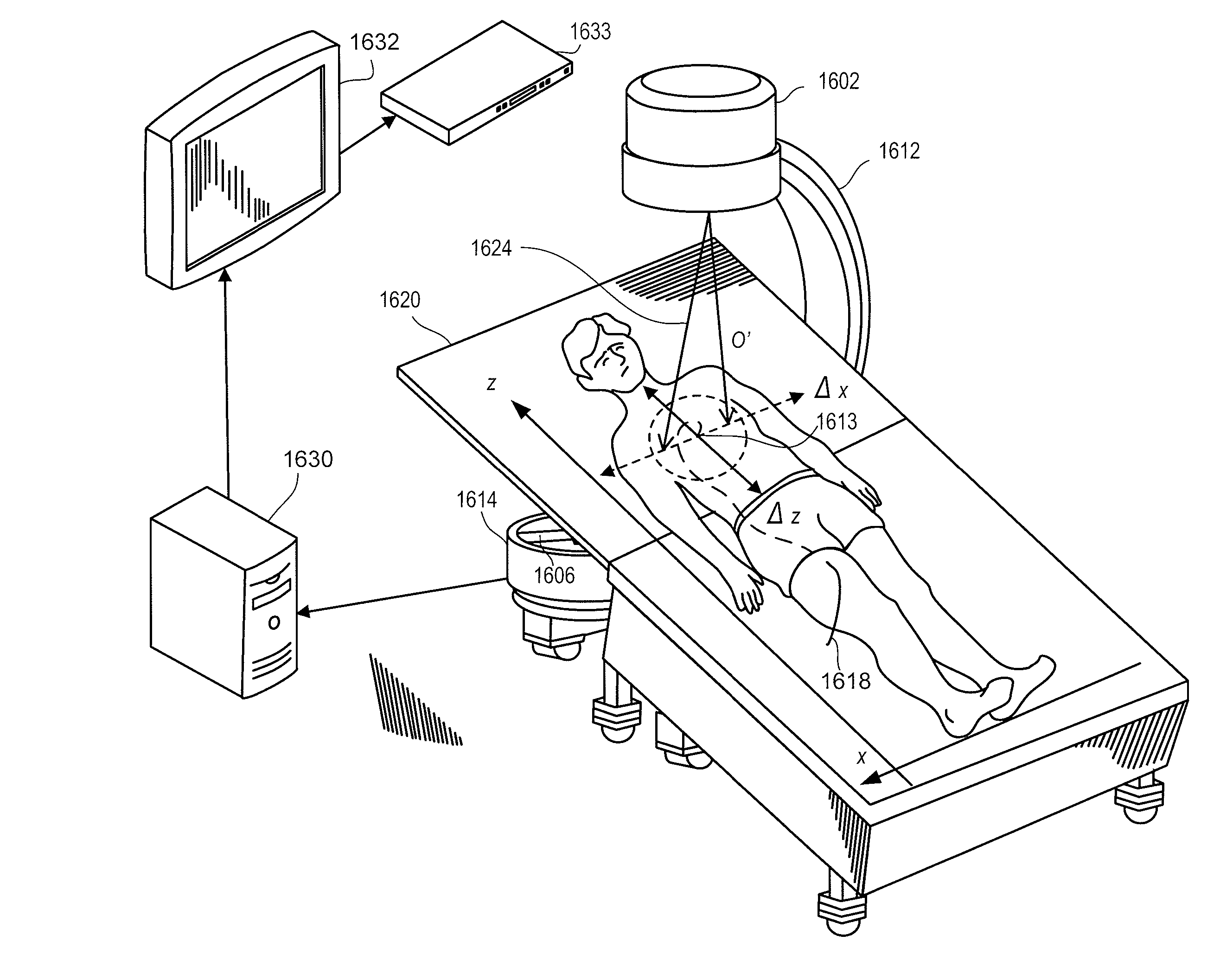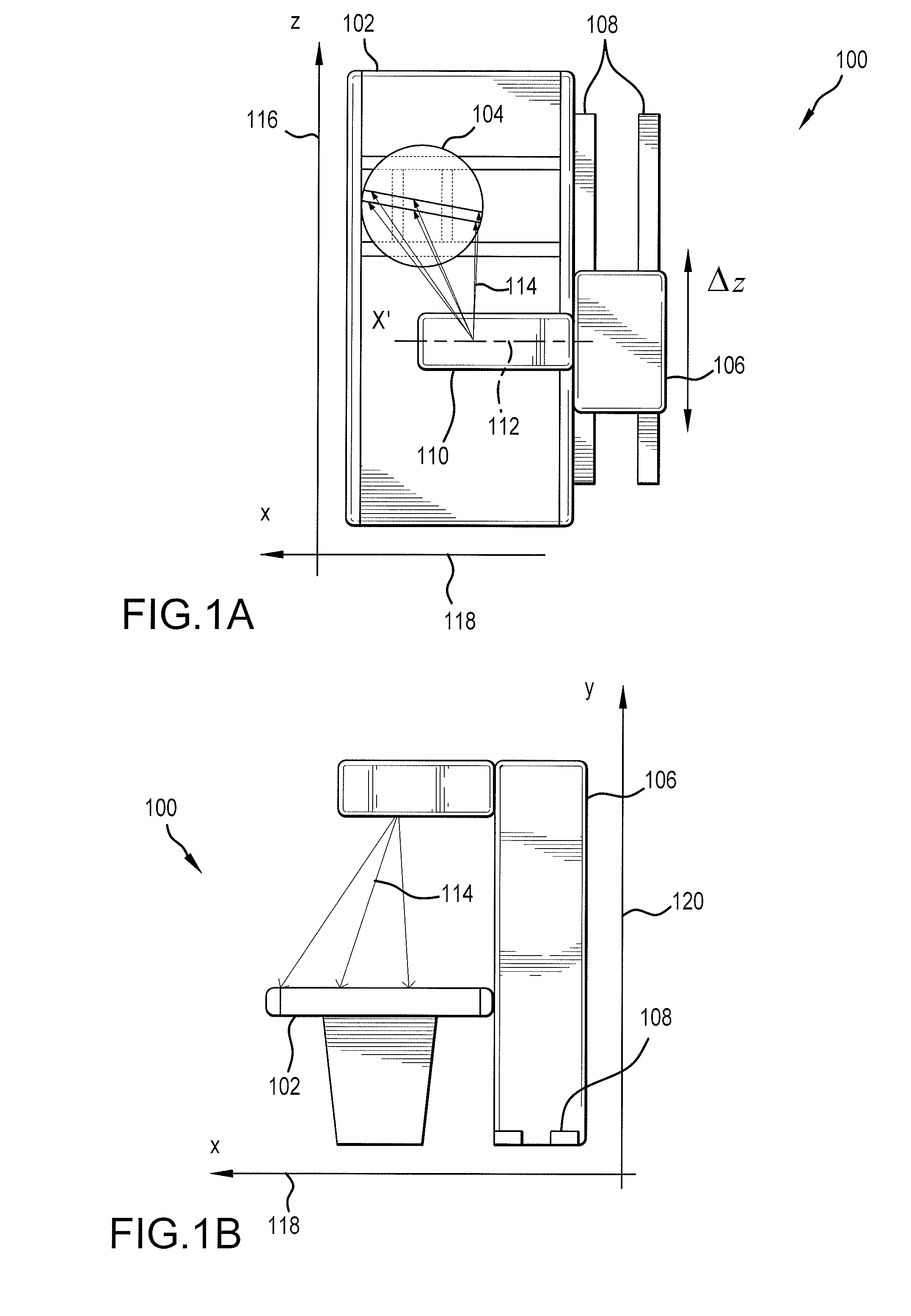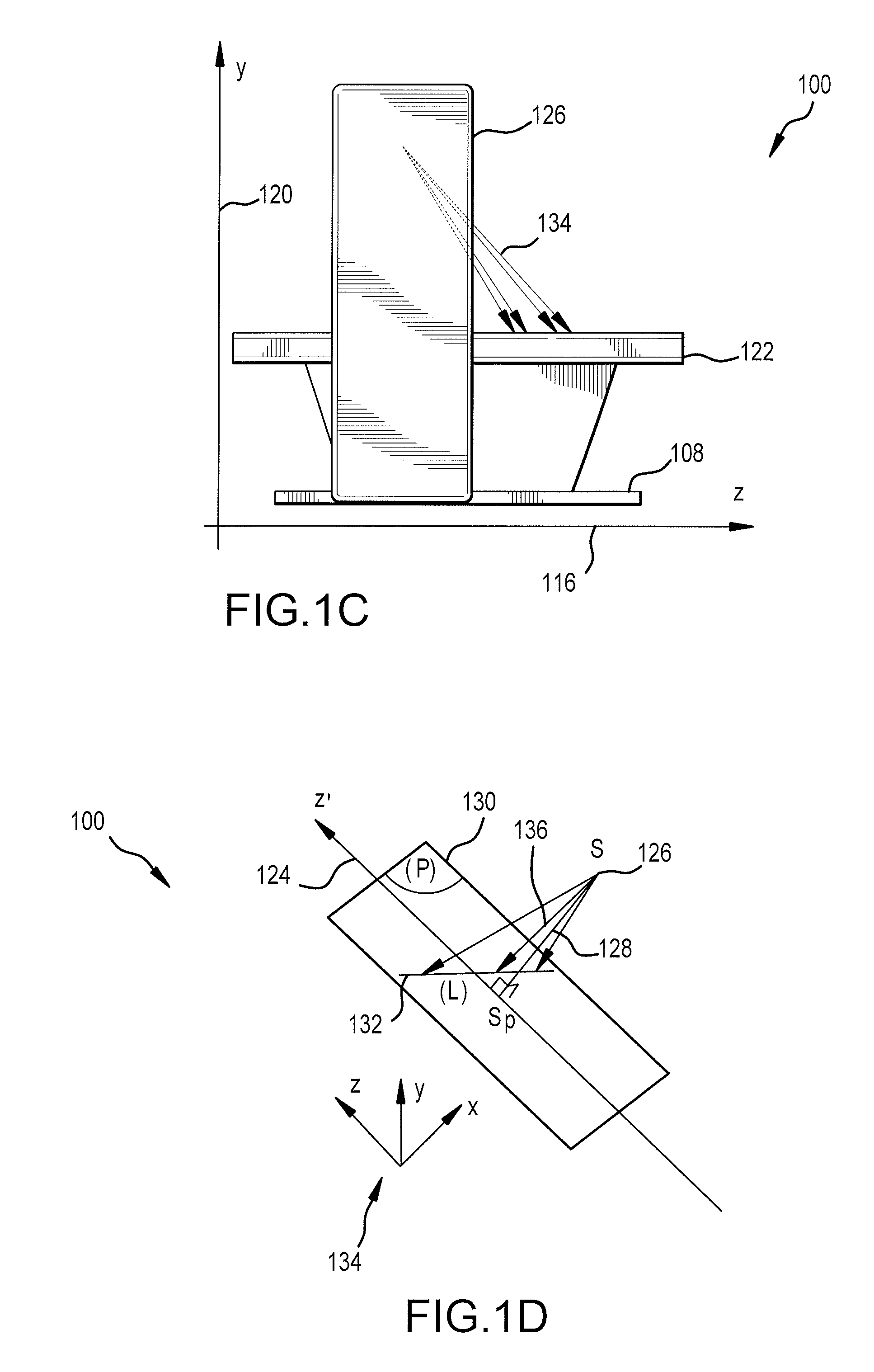Method And System For Dynamic Low Dose X-ray Imaging
a low-dose x-ray and dynamic technology, applied in the field of x-ray imaging, can solve the problems of large impediments of prior art interventional imaging, large number of x-rays, and inability to solve the problem of high subject and attendant dosage, and achieve the effect of reducing the scattering of detected photons
- Summary
- Abstract
- Description
- Claims
- Application Information
AI Technical Summary
Benefits of technology
Problems solved by technology
Method used
Image
Examples
Embodiment Construction
[0073] It should be noted that the matter contained in the following description and / or shown in the accompanying drawings may be embodied in various forms, and should therefore be interpreted as illustrative, and not in a limiting sense. Elements shown in the drawings are not necessarily to scale and may be exaggerated, enlarged or simplified, to facilitate understanding of the invention. The system implementation according to the various shown embodiments is amenable to automated controls.
[0074] Turning now to FIG. 1A, a system 100 for dynamic low dose X-ray imaging is shown in a top orthogonal view. System 100 for example allows a significant reduction in subject and physician dose while permitting effective performance of an interventional or diagnostic procedure. A frame structure (or cradle) 102, designed for placement beneath or within a subject table (see, e.g., table 1110; FIG. 11), permits relative motion of a detector assembly 104 (shown bounded by a circle) with respect...
PUM
 Login to View More
Login to View More Abstract
Description
Claims
Application Information
 Login to View More
Login to View More - R&D
- Intellectual Property
- Life Sciences
- Materials
- Tech Scout
- Unparalleled Data Quality
- Higher Quality Content
- 60% Fewer Hallucinations
Browse by: Latest US Patents, China's latest patents, Technical Efficacy Thesaurus, Application Domain, Technology Topic, Popular Technical Reports.
© 2025 PatSnap. All rights reserved.Legal|Privacy policy|Modern Slavery Act Transparency Statement|Sitemap|About US| Contact US: help@patsnap.com



